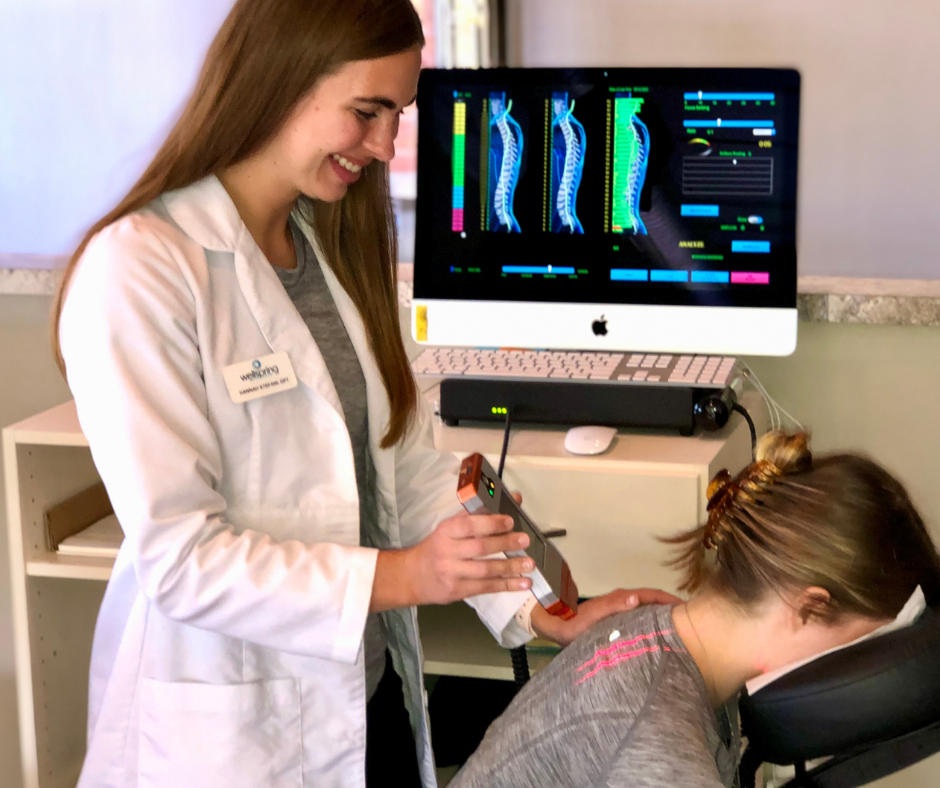Imagine that you are walking through the park on a beautiful summer evening, and then all of a sudden, BAM! You hit the ground. Why? Because your foot magically found a hidden hole, and down you went. Now you’re in pain, collapsed in a heap, and hoping no one saw you go down.
This is embarrassing, yes, but something similar may have happened to you before. What did you do? Did you know whether it was an injury that would go away on its own? Did you think of calling a physical therapist?
If this hasn’t ever happened to you, count yourself lucky. But in the future, if it does happen, know this: the best way to find out the extent of your injury is to contact a physical therapist to find out if your sprain, strain, or ankle pain warrants more attention.
What is the difference between a sprain and strain?
Some people don’t realize that sprains and strains are different. Why? The answer is simple: because pain is pain! It hurts! Oftentimes when you experience a sprain or strain, you aren’t initially concerned with which one is which. You just want relief. However, relief does lie in knowing the difference between the two injuries. Medline’s website states that:
“A sprain is a stretched or torn ligament. Ligaments are tissues that connect bones at a joint. Falling, twisting, or getting hit can all cause a sprain. Ankle and wrist sprains are common. Symptoms include pain, swelling, bruising, and being unable to move your joint. You might feel a pop or tear when the injury happens.
A strain is a stretched or torn muscle or tendon. Tendons are tissues that connect muscle to bone. Twisting or pulling these tissues can cause a strain. Strains can happen suddenly or develop over time. Back and hamstring muscle strains are common. Many people get strains playing sports. Symptoms include pain, muscle spasms, swelling, and trouble moving the muscle.
At first, treatment of both sprains and strains usually involves resting the injured area, icing it, wearing a bandage or device that compresses the area, and medicines. Later treatment might include exercise and physical therapy.”
After reading that, which injury do you think you’ve sustained? If you think you may be in need of physical therapy intervention for your sprain or strain, don’t hesitate to contact us. One of our physical therapists will evaluate the injured area to determine the best course of treatment for your needs.
But wait — what’s the difference between tendons and ligaments?!
When it comes to ankles, this is one of the most commonly asked questions of a physical therapist. It’s actually much easier to differentiate between the two than you might think.
Tendons are strong, fibrous tissue that connects bone to muscle. Ligaments are similar types of strong connective tissues that bond one bone to another bone. A sprain happens when the ligaments of a joint (your ankle, knee, wrist, elbow, etc.) are twisted so violently that these strong connective tissues are stretched or slightly torn. With a sprain the joint typically remains in place.
A sprain can be mild resulting in only a few minutes or hours of pain, or it can be more severe, requiring physical therapy or even surgery.
There are two types of strains—acute and chronic. A strain happens when the tendons that connect a muscle to bone are stretched or slightly torn. Acute strains happen as a result of an injury. You may fall down the stairs, straining a muscle in your leg as you try to prevent yourself from falling. Chronic strains happen when you perform the same motion over and over, such as in sports.
Gymnasts, tennis players, golfers, and other athletes are likely to develop strains when they are not properly conditioned, do not stretch, or use improper equipment.
Have no fear, physical therapy is here!
Some people hear the term “physical therapy” and automatically write the possibility of them benefiting from it because they aren’t an athlete or have not just undergone surgery. Interestingly enough, working with a physical therapist has more benefits than simply regaining your strength after an injury.
Physical therapists are highly trained movement experts who not only can help you recover from a sprain or strain, they can help you prevent injuries in the future. A physical therapist also offers drug-free pain relief that keeps you mobile and strengthens your body.
Physical therapy for a sprain or strain typically follows three steps. In the acute phase of the injury, pain relief is one of the primary goals. Severe sprains or strains are often painful. If surgery is warranted to reconnect a ligament or tendon or repair a muscle, pain management will often make the difference between a patient who works hard in therapy and one who does not.
A physical therapist will offer several pain-relieving techniques such as:
- Ice
- Heat
- Ultrasound
- TENS
- Therapeutic massage
- Stretching
- Manual therapy
They will also teach patients how to administer these treatments on their own.
In the second phase of physical therapy, your physical therapist focuses on healing the injury. These two phases go hand in hand as your physical therapist works to help you regain motion in the joint where the sprain happened or the muscle that is strained.
Once the injury has healed, a physical therapist will move on to preventing you from sustained future injuries. Once you have sprained a joint, you are more likely to do it again without proper therapy. The same goes for strains. The stronger your muscles are around an injured area, the better chances you have at avoiding future problems!
Kiss your pain goodbye for good!
If you were the unfortunate main character of the “walk in the park” scenario at the beginning of this blog, then physical therapy may be a good choice for you! Even if you’ve sustained a sprain or strain in another way, no worries. Physical therapy can help you get back up on your feet, feeling your best, and looking forward to safe, enjoyable walks in the park. For more information or to find out more about physical therapy’s effects on sprains and strains, contact Wellspring Health Center today.
Source:
- https://medlineplus.gov/sprainsandstrains.html
- https://medlineplus.gov/ankleinjuriesanddisorders.html
- https://medlineplus.gov/wristinjuriesanddisorders.html
Tags: physical therapist, Sprains, Strains, sprains and strains, Physical Health, chronic pain, Wellspring Health Center, health and wellness, physical activity, fitness, physical fitness, physical therapy, Health, Natural Treatment, Natural Pain Relief




